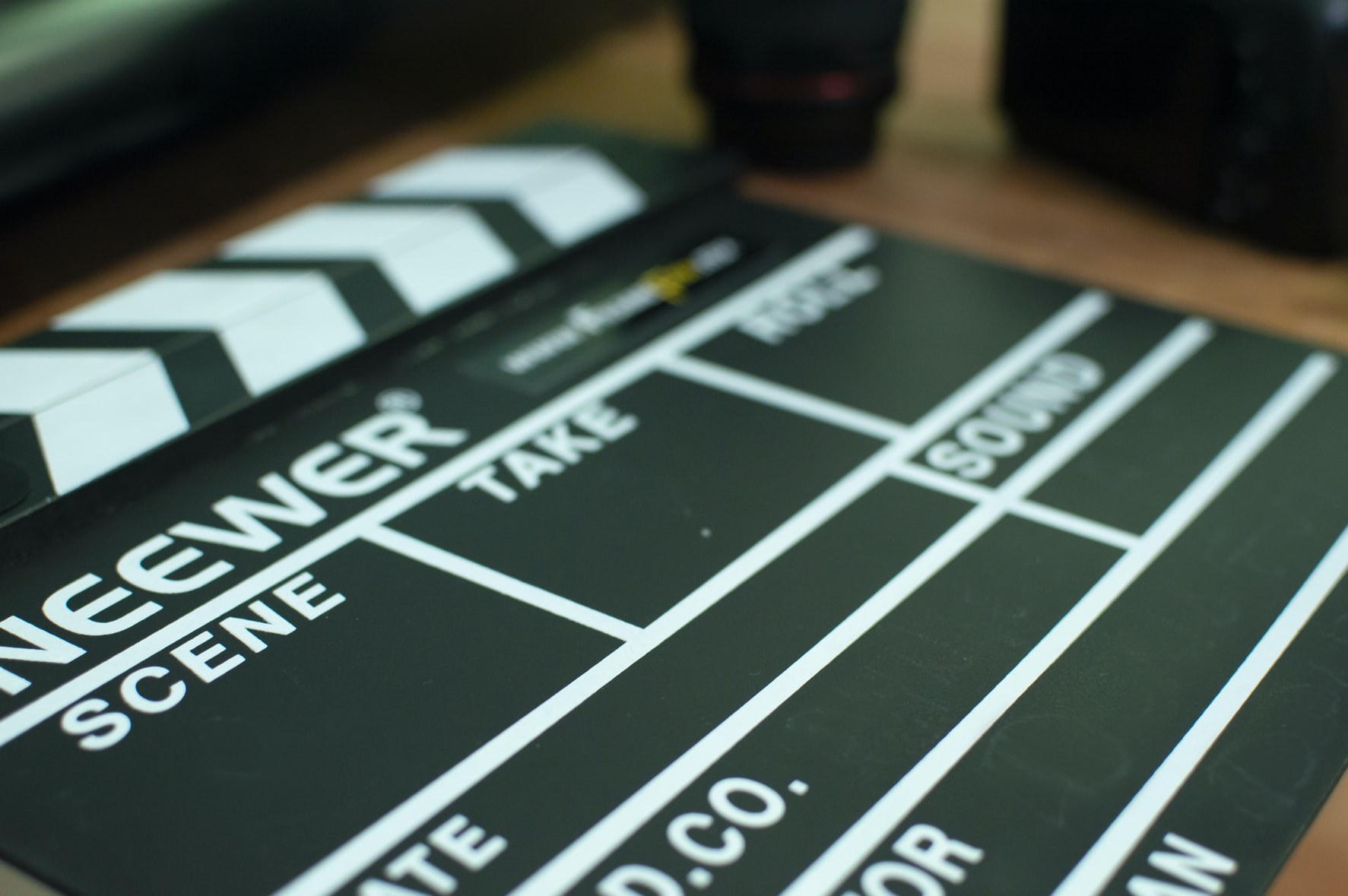

Feb 03, 2022
Visual storytelling is the process of telling a story through visual media – graphics, images, pictures and videos. It spans everything from street art and photo journalism to TikTok videos, Instagram Stories, Netflix series and feature-length documentaries. It’s where video and audio cross over with narrative and, when it’s done well, it’s extremely powerful, memorable and emotive.
If our lives were moving online pre-pandemic, with more time than ever spent on our TVs, laptops and smartphones, in the past two years our screens have become a lifeline. As we keep scrolling, our attention spans are shortening, and we expect content to be quick and easy to digest. It’s not just younger generations demanding photo and video content – while 81% of Gen Z say Instagram and YouTube are their preferred social networks”, Ofcom found adults spend a third of their day watching TV and online video content.

Video can have an immediate, emotional, persuasive impact that gets people feeling and acting, which is why it’s so effective in raising awareness, campaigning and fundraising. People retain 95% of a message when they watch it in a video compared to 10% when reading it in text, and social video generates 1200% more shares than text and image content combined.
Right now, you need to build your visual muscle in order to reach and engage new audiences. That means not only creating new visual content, but understanding that supporters and beneficiaries are using your assets to create. Smart organisations are exploring new ways to connect and engage with people, particularly younger generations of digital natives – the supporters of the future.

Remember the brilliance of the TikTok handwashing dance routines from British Red Cross? Not only did the campaign cheer people up at a tough time, it also raised £90K through the TikTok donation sticker. TikTok for Good actively seeks to help organisations “grow their audience, activate supporters, and raise awareness around specific causes”.
Mind encourages all their supporters to pick up their phones, record and share their stories. Powerful, first-hand accounts of experiences like living with OCD and suffering from depression are driving the charity’s work to raise awareness of mental health struggles. Mind’s campaign for changes to the Mental Health Act has been bolstered by eye-opening video accounts of personal experiences of being sectioned.
RNLI made headline news with its gut-wrenching raw bodycam footage of a migrant rescue on the English Channel. The emotive power of the video at a time when immigration is such an urgent issue prompted more than £200K in RNLI donations.
And it’s not just short-form video content that’s reaching consumers – the meteoric rise of Netflix in recent years is proof of the power of long-form content. Last year saw shows like Maid exploring domestic abuse, Crip Camp offering a new perspective on disability, and a whole genre of content curated to support Black Lives Matter.

Footage shared online by the general public defined major world events like the 2010 Haiti earthquake, the Arab Spring, Occupy Wall Street and Black Lives Matter. Disillusioned with mainstream media, people are already using their own initiative and resources to report the news. While citizen journalism has the power to be both positive and destructive, it’s not going anywhere. And as 5G rolls out across the UK over the next couple of years, people will be able to share and stream on-the-ground content in near real-time.
Sites like WikiNews provide a dedicated platform for citizen journalists, while collectives like Bellingcat use social media to investigate everything from “drug lords and crimes against humanity to tracking the use of chemical weapons and conflicts worldwide”. UK-based magazine NowThen describes itself as “an independent platform for free, high-quality citizen journalism”, offering “breaking news, local low-downs and opinion pieces” with the call to action “don’t hate the media – become the media.” Even The Guardian invites readers to contribute videos, pictures and stories on its Community page.
Photos taken by citizen journalists of the India COVID crisis became important evidence of ongoing state violence, ensuring that “the truth of the crisis was committed to history and to public memory”. When Facebook removed evidence of atrocities in Syria and Myanmar, the United Nations Human Rights Council set up the IIIM and the IIMM “to collect, consolidate, preserve and analyse evidence related to serious international crimes”. Last year, activists and citizens of the Dalit community in Delhi took to social media to express outrage at the rape of one of their children. Voices that will not be silenced are using all the resources at their disposal, including social media, to amplify their messages and stand up to power.

The pandemic saw an explosion of kids’ creativity put to good use, with rainbow pictures displayed in windows across the UK in support of the NHS, spreading hope and solidarity to other families in lockdown. Meanwhile, 12-year-old Noah, aka 'Background Bob', raised £18k for Colchester and Ipswich Hospitals Charity by painting backgrounds and inviting artists to collaborate by painting on top.
While street art tributes to the NHS sprang up around the UK, around the world street murals expressed protest and resistance in response to the murder of George Floyd by a police officer. Victims of police brutality and supporters of Black Lives Matter used art as a way to tell their stories of celebration and resistance.
2021 was a huge year for artistic activism, from the expression of voices demanding climate action during the COP26 climate conference to the political fashion statement made by Alexandra Ocasio-Cortez at the Met Gala, which prompted a surge in Google searches of ‘Tax The Rich’.

We can’t explore visual storytelling without mentioning the huge developments happening in audio. Music and sound are integral to most of the video content we consume, and play a large part in activating memory and emotion. You only need to think of the ubiquitous Just Eat jingle and the instantly-recognisable Netflix logo animation to know that sonic branding is a growing force to be reckoned with.
By now we’re all familiar with the huge growth in popularity of podcasts, as screen-weary consumers turn to audio as a welcome alternative to endless scrolling and multi-screening. Audiobooks are set to continue the growth they’ve seen over the past two years. But when audio and video combine in clever, creative ways, the results can be transcendent. And groundbreaking.
Pop music and video have been inseparable for decades, and now they’re becoming interactive. Last month, Doja Cat’s codable video in collaboration with Girls Who Code became “the world’s first ever codable music video experience”. Now we can donate to charity through our smart speakers and artists can raise money through Spotify, younger generations are interacting with good causes through an ever-expanding range of media.
As ever, it’s all about being smart and standing out from the crowd. As Creative Director of Creature, Megan Egan says, "we’re all used to hearing loud, busy adverts that try to demand our attention, but sometimes it’s the quieter ones that cut through, such as the recent National Trust work that offered a moment of calm to transport viewers to the countryside, among the barrage of other ads."
Considering over 82% of internet traffic will be online videos this year, if you’re not already on board, it’s time to get visual. The use of video and visual storytelling is going to be crucial in 2022 and beyond, with photo and video sharing platforms the fastest growing social media networks. With Gen Z spending their time on Snapchat, TikTok and Instagram, it’s clear that the generations of supporters coming up are engaging mostly with visual content online.
Get to know the people you want to reach. Where are they spending time? How are they interacting? What’s capturing their attention at the moment and what’s important to them? Build understanding of your current and future audiences to better connect with them. Move out of your comfort zone to engage with people where they already are, listening and learning.
Be brave and try things out. Experiment with different formats, approaches, channels and voices. How does your brand story change? How can you tell the same story in multiple different ways?
How can you put the story in the hands of your supporters and beneficiaries, to tell a diversity of narrative and offer a different perspective on your cause and mission? You have a treasure trove at your fingertips. Be brave.